#anglo saxon history
Text
"That Æthelswith was the bestower of such gifts is consistent with the other things we know about her. In 868 she witnessed a West-Saxon charter, in which she made a grant of fifteen hides of her own land in Berkshire. She also witnessed all of her husband King Burgred’s charters. Though we only see glimpses of her influence, Æthelswith, like other Mercian queens before her, was a politician.
In 874, twenty one years after Æthelswith married Burgred, the royal couple were forced out of their kingdom by an encroaching Viking army. They fled together to safety in Rome. While Burgred died soon after they arrived, Æthelswith outlived him for another decade, which she spent in Italy.
Queen Æthelswith passed away in 888 in Pavia, and was laid to rest there. She may have been undertaking a pilgrimage when she died. Her body and the ring that she once bestowed were both buried underground a thousand miles apart. And they say medieval women didn’t travel…"
#Æthelswith#history#women in history#women's history#9th century#english history#queens#leaders#english queens#anglo saxon history#anglo saxon england#medieval women#medieval history#middle ages#medieval#archeology
249 notes
·
View notes
Text
In Anglo-Saxon times, a lord was, literally, a loaf-giver, the one who put bread on the table. The Anglo-Saxon word hlaford means loaf-keeper and lord, while hlæfdige, lady, is from hlaibadigon, bread-kneader.
Diane Purkiss, English Food A People's History
42 notes
·
View notes
Text

#Æthelstan#alfred the great#9th century#10th century#english history#anglo saxon history#medieval history#medieval confessions
24 notes
·
View notes
Text

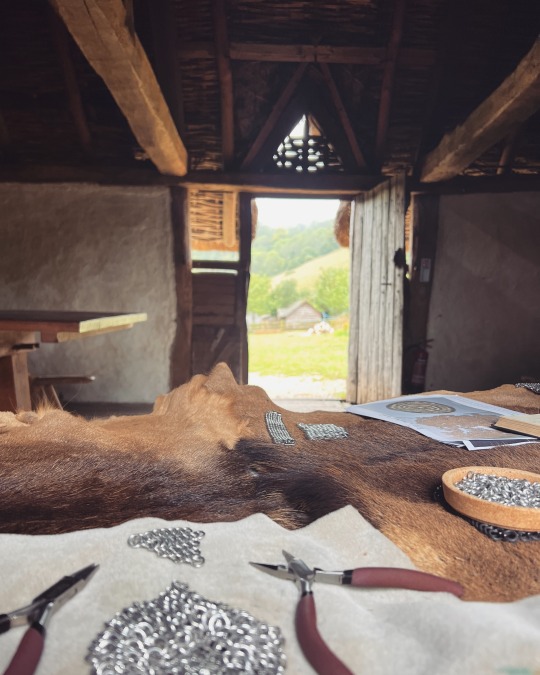

Here’s where you can find me today! Demonstrating mail making in a reconstruction Anglo Saxon house :)
(More info)
(C) do not use, edit, reupload images
#Anglo Saxon#chainmail#chainmaille#historical reenactment#history#Viking history#Anglo Saxon history#non monster post
44 notes
·
View notes
Text

it seems to me old Germans were almost conservative about not vocabulary, but punctuation.
(the man on my pic is ancient Celtic one, have a GOAT day)
#aph art#aph#hetalia#axis power hetalia#aph scotland#aph ireland#aph britain#aph england#aph wales#aph northern ireland#artwork#art#anglo saxon history#vikings#beowulf
12 notes
·
View notes
Text
Anglo-saxon period


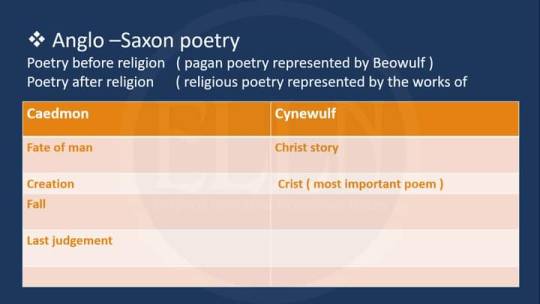


#anglo saxon period#anglo saxon#Anglo saxon history#Old english period#Englishliteraturehistory#historyofenglishliterature
2 notes
·
View notes
Text
the more i write about 9th century england, the more i realise i actually need to do research about the anglo-saxon part of this time period, so if you have any book recs please send them my way
#i am grasping at straws over here my dudes (gender neutral)#there's only so much my viking history knowledge/books can tell me about the saxon side of things#what calendar did they even use??#wynne rambles#history#medieval history#anglo saxon history
3 notes
·
View notes
Text
youtube
1 note
·
View note
Text
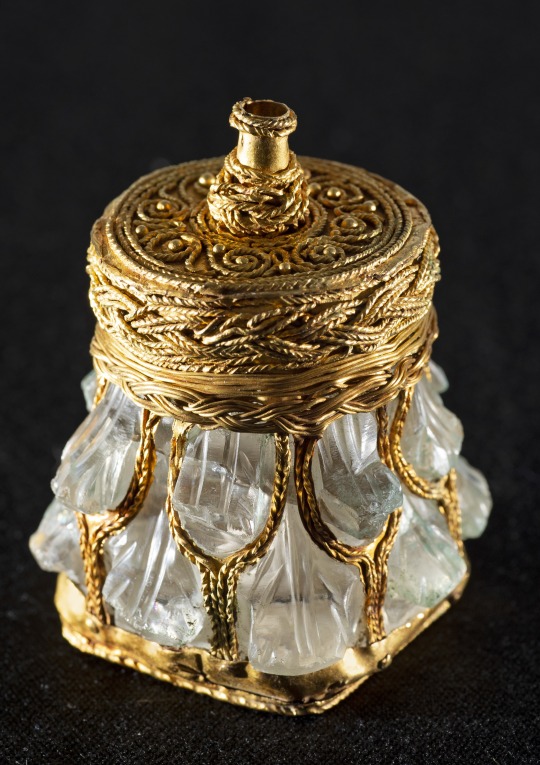
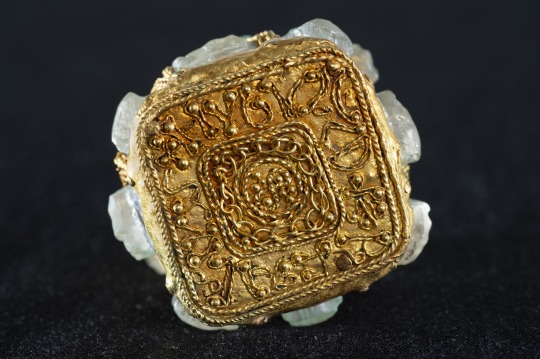
Hey Everyone! Look at this Gold and Rock Crystal Bottle from the Galloway Hoard!
In September of 2014 an avid metal detectorist named Derek Mclennan discovered one of the grandest historical finds in Scottish archaeological history. While searching on church lands near Balmaghie, Mclennan uncovered the Galloway Hoard, a viking age treasure hoard consisting of over 100 objects dating to around 900 AD. While the hoard has some gold objects, most are silver including pieces of jewelry, hack silver, and silver ingots.

Among the objects, the most incredible is a rock crystal bottle that is decorated with gold. The bottle was found inside of a silk pouch, the silk coming from either Byzantium or Asia. The crystal jar itself is not from the middle ages but is Roman and dates to the 4th century. Later in the early middle ages the jar was decorated in gold filigree, at the behest of Bishop Hyguald according to an inscription on the gold work. While the identity of "Bishop Hyguald" is unknown, it is thought that he mostly likely came from Northumbria, an Anglo-Saxon kingdom in northern England. Northumbria would be conquered and occupied by Danish Vikings in the 9th century, which explains how the bottle became a part of the Galloway Hoard.
Today, the bottle along with the rest of the Galloway Hoard is housed at the National Museum of Scotland
#history#antiquities#art#middle ages#medieval art#vikings#anglo saxon england#scotland#scottish history
658 notes
·
View notes
Text

Painting of an Anglo Saxon warrior (female) that I made for myself a few years back! Got inspired by Germanic and Celtic regalia, an almost endless source of inspiration for these type of characters..
#dungeons and dragons#board games#concept art#fantasy art#tabletop games#digital painting#magic the gathering#ancient history#character design#armor#anglo saxon#vikings#celtic#germanic
643 notes
·
View notes
Text

The Varangian Guard defeats the Pechenegs at the Battle of Beroia 1122 AD
by Giuseppe Rava
#byzantine empire#varangian guard#art#giuseppe rava#battle of beroia#pechenegs#byzantine#byzantium#varangian#eastern roman empire#history#varangians#byzantines#imperial#imperial guard#empire#roman#europe#european#bulgaria#john ii komnenos#pecheneg#middle ages#medieval#axe#viking#anglo saxon#vikings#norsemen#stara zagora
148 notes
·
View notes
Text

The embroidered chemise of St. Balthild, an 7th century Anglo-Saxon noblewoman sold into slavery in the house of Frankish king Clovis II, who eventually married her, making her queen of Neustria and Burgundy, and later queen-regent for her three sons. Balthild used her position to abolish Christian slave-trading in her kingdom, as well as buying many slaves to free them.
She established several religious institutions, including the abbeys of Chelles and Corbie, which became renowned as centers of learning in Medieval Europe. She retired to Chelles during the reign of her third son, Theodoric III, and died in 680; she would be canonized some 200 years later.
The chemise may have been embroidered by Balthild herself in her time at the abbey; the designs mimic the jewels she would have worn as queen, but embroidered in silk rather than gold thread, with the garment itself made of plain linen.

During the French Revolution, Chelles Abbey hid its relics in a nearby church, where they weren't discovered until 1983. Among them were Balthild's chemise, along with the remains of the queen herself; her burial garments weren't as well-preserved, but did include a silken girdle woven in striking scarlet and gold.
211 notes
·
View notes
Text

England's oldest door predates the rest of Westminster Abbey c.1060
#Westminster Abbey#oldest door#cathedral#London#UK#Edward the Confessor#sacred space#mediaeval#oak door#Anglo-Saxon#English history#Christendom#AD 1060
845 notes
·
View notes
Text
The Langobards

The Langobards/Lombards/Longobards are an Italic-Germanic tribe with origins in southern Scandinavia around the first centuries B.C. and A.D.
Their steady migration southward can be retraced by archaeological artifacts, which show their Scandinavian origin.
Their early connections to (the geographical city of) Rome made them very influential in the Western Roman world; on financial, military, religious but also law practice and kingship levels.
The Lombards were quickly christened and were the founding fathers of many religious institutions in northern Italy, ruled Italy, and adapted/adopted Roman Law, making for a culturally rich period. Their capital Pavia is located in the Italian province of Lombardy, named after, you guessed it.
It has to be said (it sounds like a fake fact but is not) that their name means “Long Beards”. In many European languages the descriptive name can be heard in “Langobard” also written as “Longobard”.
Image:
Langobardic radiate headed bow brooch
Found in: Chiusi - Tuscany, Italy
#frankish#merovingian#viking archaeology#archaeology#carolingian#charlemagne#field archaeology#viking mythology#merovingian archaeology#germanic mythology#lombards#Lombardi#lombardia#Lombardic#longobardi#Langobards#norse mythology#anglo saxon#field archaeologist#viking#frisian#odin#vikings#germanic#germanic folklore#germanic archaeology#wodan#anglo saxon archaeology#history#jewelry
139 notes
·
View notes
Text

A Hoard of 122 Anglo-Saxon Coins Sells at Auction
A hoard of more than 100 Anglo-Saxon coins discovered by two metal detectorists in a field near Braintree, Essex, has been sold auction at Noonans Mayfair on February 21. Believed to have been buried in 1066 and owned by an individual who died during the Battle of Hastings. The collection of Anglo-Saxon pennies found by two metal detectorists have been sold for £325,560 ($411,000) at auction.
The coins were each worth 12 shillings, a considerable sum back in 11th century, leading Noonans’s coin expert Bradley Hopper to hypothesize that the reason they were abandoned was due “some great personal misfortune” such as the death of their owner in the conflict. Hopper added, though, that “it was perhaps quite common for people who had access neither to banks nor vaults to conceal their wealth in the ground, even in times of peace.” All bar two of the coins were minted within five years of 1066.
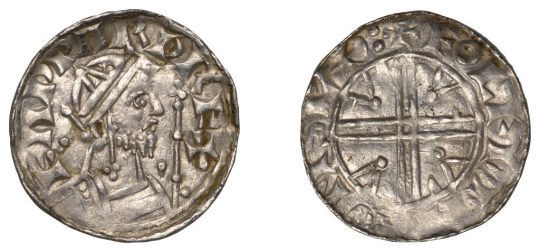

A small selection of coins from the hoard were bought by Colchester Museum and the Fitzwilliam Museum in Cambridge, following the protocol of the 1996 Treasure Act. The purchased coins include two 11th-century Byzantine coins.
The metal detectorists found the majority of the coins in 2019 over the course of a few days, all within a 100-foot radius, some just inches beneath ground’s surface. A further 70 coins were found when the site was revisited in 2020. The coins were minted in various southern English towns and cities, including London, Cambridge, Canterbury, and Hastings.
The coins date from the reigns of Edward the Confessor and Harold II, the last two Anglo-Saxon kings of England. Harold was killed during the 1066 Battle of Hastings, seen on the Bayeux Tapestry receiving a fatal arrow through the eye. His death marked the victory of William the Conqueror, the first Norman king of England.
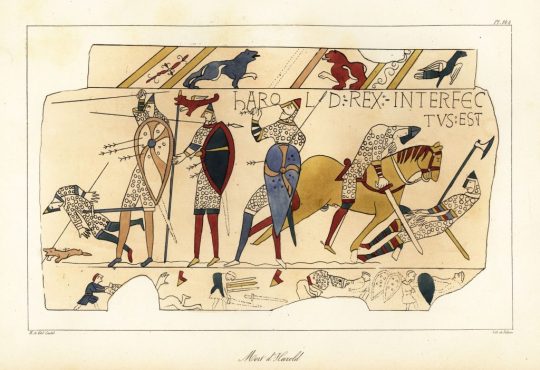
The detectorists have kept several coins, with 122 of the remaining relics headed to Noonans. The proceeds will be shared between the finders and the owner of the land on which the coins were discovered. Some coins included in the sale are exceedingly rare and could fetch £6,000 ($7,600) individually.
Hopper said that Noonans is “particularly fortunate that the auction catalogue contains not only the rarest and most academically interesting English coins from the Braintree Hoard, but also those pieces in the finest state of preservation.” He hopes that the auction will “promote further research into this wonderful coinage.”
By Verity Babbs.


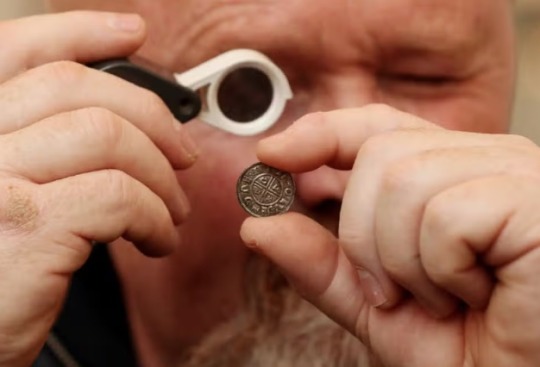
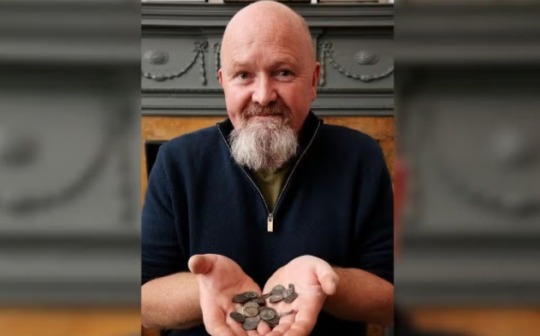
#A Hoard of 122 Anglo-Saxon Coins Sells at Auction#Noonans Mayfair#Battle of Hastings#Edward the Confessor#Harold II#William the Conqueror#metal detecting#coins#collectable coins#rare coins#ancient artifacts#archeology#archeolgst#history#history news#ancient history#ancient culture#ancient civilizations#middle ages
80 notes
·
View notes
